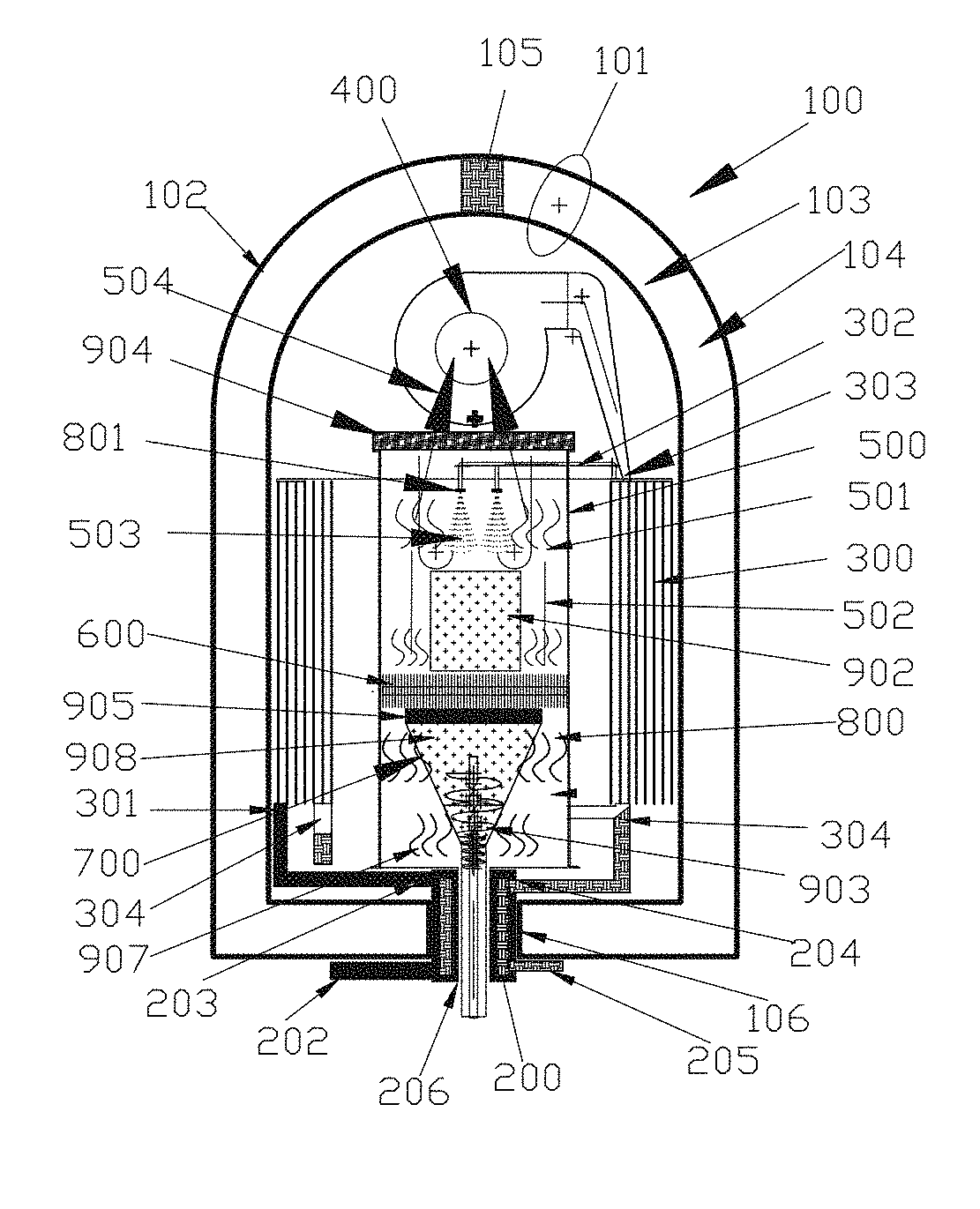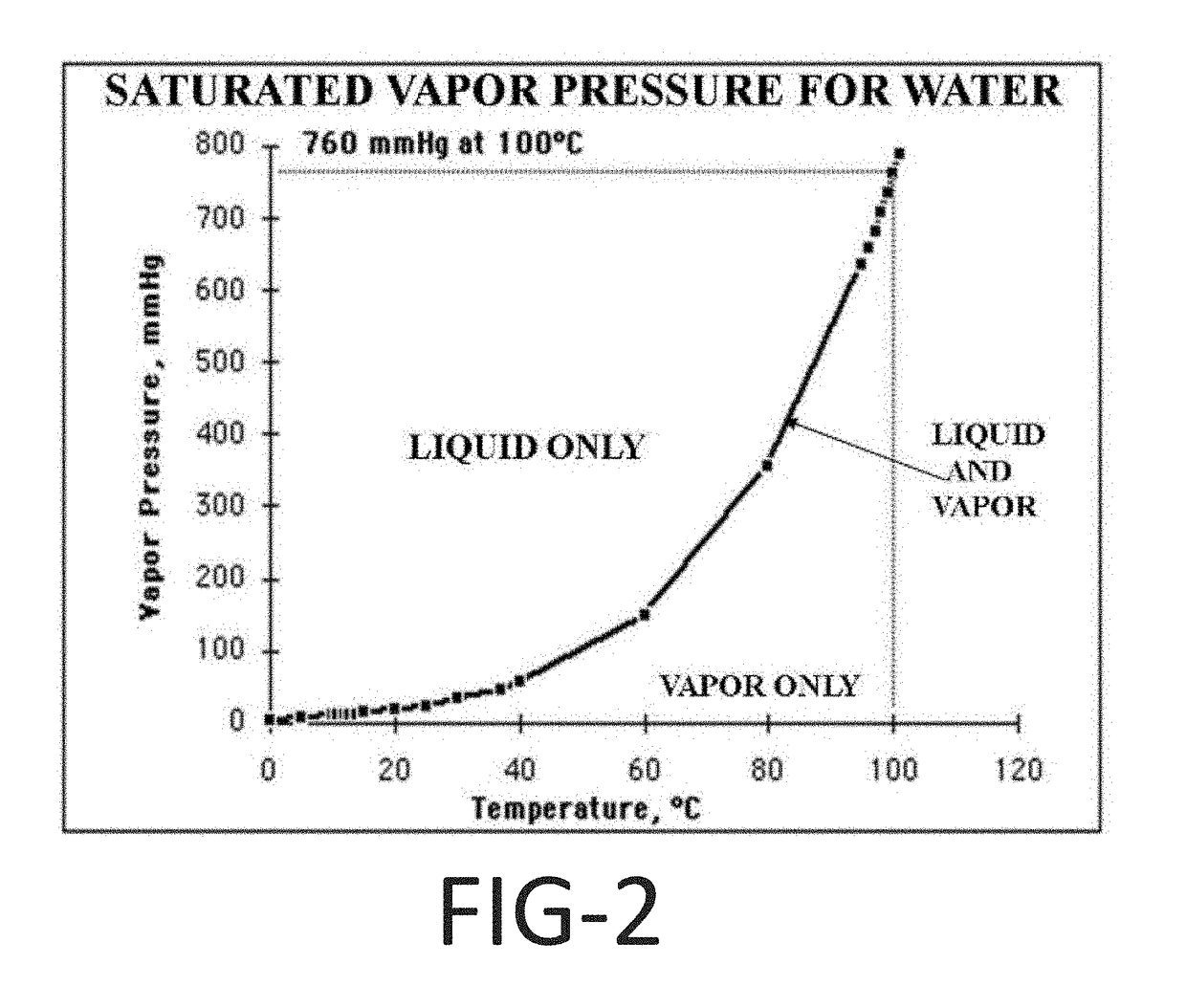High efficiency, large scale desalination system
a desalination system and high efficiency technology, applied in the direction of specific water treatment objectives, separation processes, evaporation, etc., can solve the problems of increasing environmental hazards to the ocean ecosystem, affecting the efficiency of desalination systems, and affecting the quality of water supply, so as to reduce the overall energy requirements, and improve the effect of distillation efficiency
- Summary
- Abstract
- Description
- Claims
- Application Information
AI Technical Summary
Benefits of technology
Problems solved by technology
Method used
Image
Examples
Embodiment Construction
[0048]The detailed description set forth below in connection with the appended drawings is intended as a description of presently-preferred embodiments of the invention and is not intended to represent the only forms in which the present invention may be constructed or utilized. The description sets forth the functions and the sequence of steps for constructing and operating the invention in connection with the illustrated embodiment. It is to be understood, however, that the same or equivalent functions and sequences may be accomplished by different embodiments that are also intended to be encompassed within the spirit and scope of the invention.
[0049]Referring to the drawings, FIG. 1 is a representative view of an embodiment of the desalination system 10 showing all of the basic assemblies and plumbing surrounded by a first wall 20a and secondary wall 20b of a double wall. The space 25 between the first wall 20a and the secondary wall 20b is under low partial vacuum, between 0.001...
PUM
| Property | Measurement | Unit |
|---|---|---|
| saturated vapor density | aaaaa | aaaaa |
| saturated vapor density | aaaaa | aaaaa |
| saturated vapor density | aaaaa | aaaaa |
Abstract
Description
Claims
Application Information
 Login to View More
Login to View More - R&D
- Intellectual Property
- Life Sciences
- Materials
- Tech Scout
- Unparalleled Data Quality
- Higher Quality Content
- 60% Fewer Hallucinations
Browse by: Latest US Patents, China's latest patents, Technical Efficacy Thesaurus, Application Domain, Technology Topic, Popular Technical Reports.
© 2025 PatSnap. All rights reserved.Legal|Privacy policy|Modern Slavery Act Transparency Statement|Sitemap|About US| Contact US: help@patsnap.com



